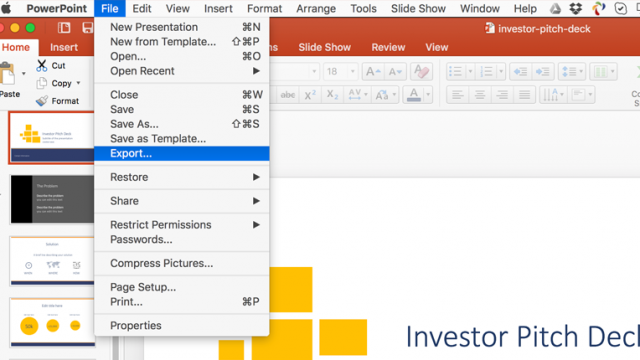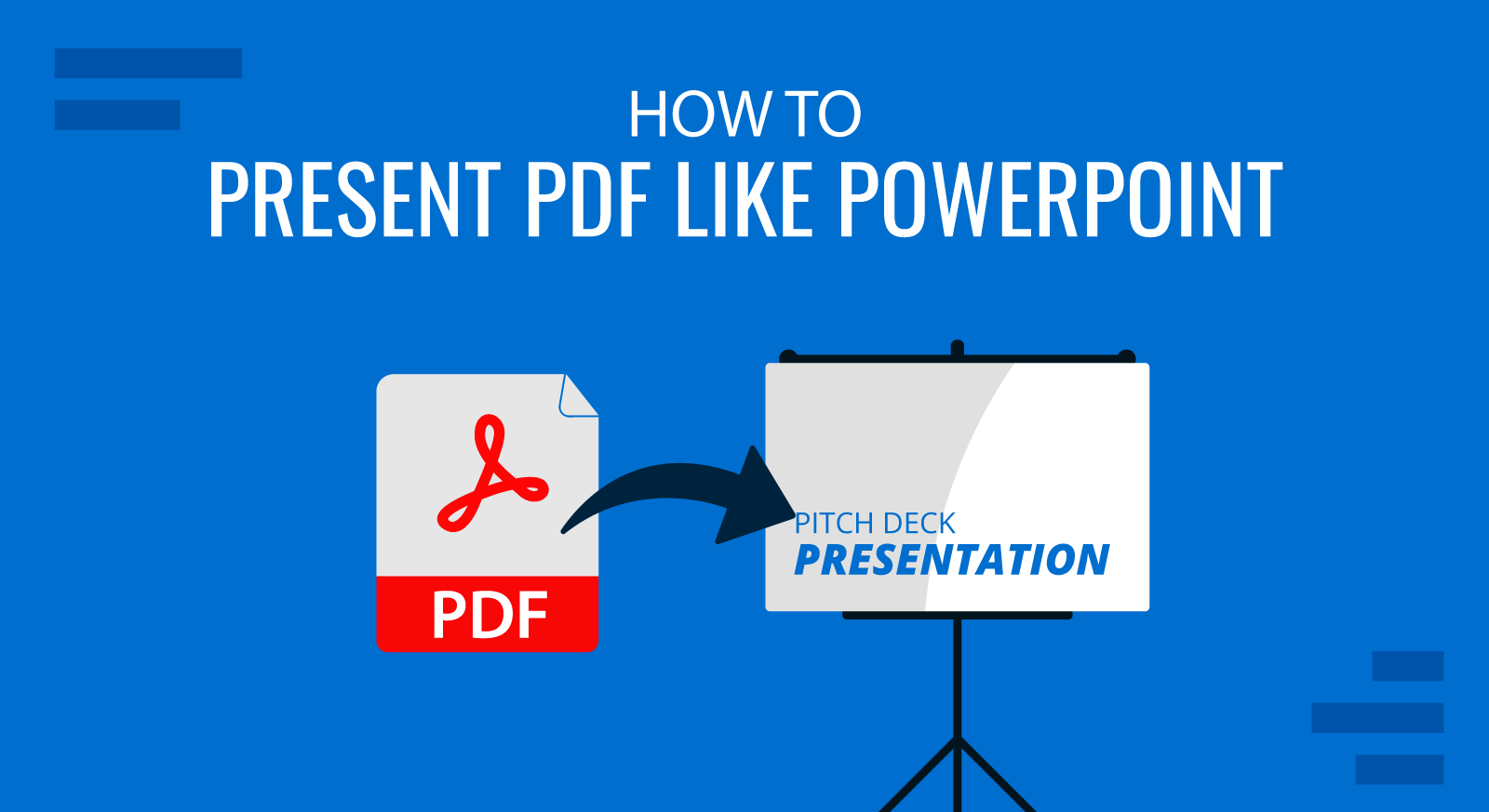
When creating a polished report, academic paper, or corporate document, PDF presentations are often the format of choice for their clean layout and universal compatibility. But what if you want to present that PDF with the flow of a PowerPoint presentation? While PDFs are static by nature, there are several ways to present PDFs just as effectively as a slideshow presentation.
In this guide, we’ll explore why presenting a PDF like a PowerPoint makes sense, the best methods for doing so, and tips for ensuring your PDF presentation stands out.
Presenting a PDF Like a PowerPoint
There are several ways to present a PDF presentation with the flair of a PowerPoint presentation: using slideshow features in PDF readers or converting the PDF into a PowerPoint file are two of these options. Other alternatives to presenting PDF like PowerPoint exist, like using third-party tools. Let’s explore some of these methods for presenting PDF as PowerPoint and learn how to turn PDF into PowerPoint presentations?.
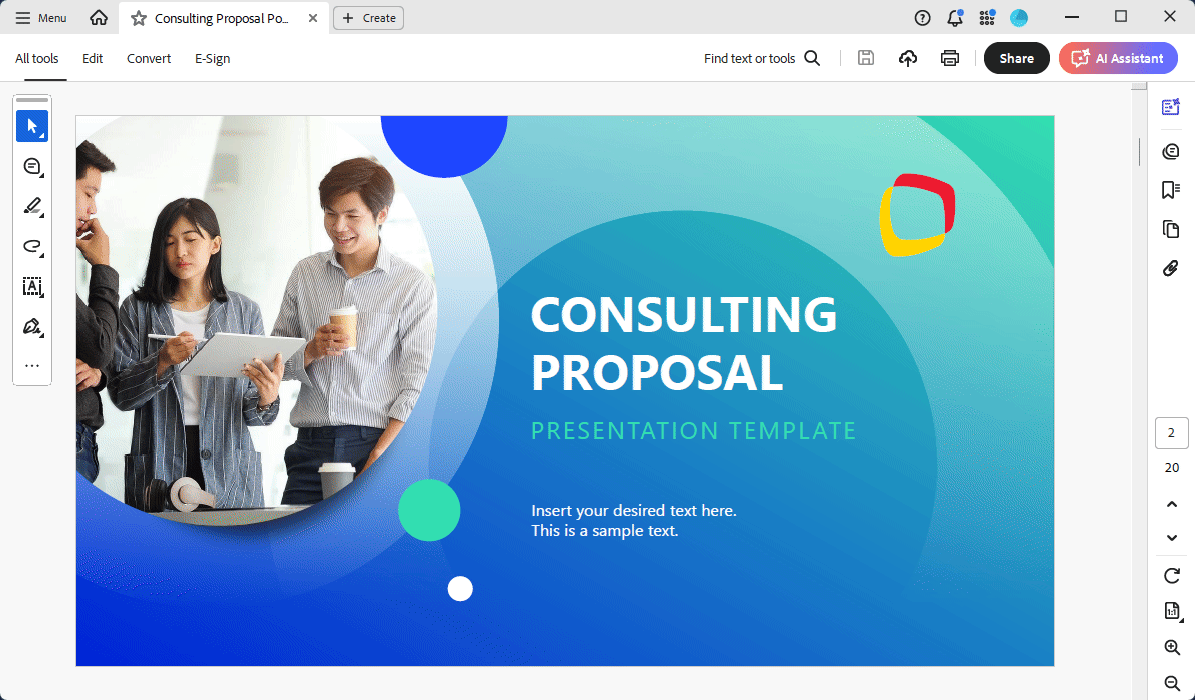
1. Use PDF Readers to Present in Full-Screen Mode
Most modern PDF readers include a full-screen mode that allows you to present your PDF as a series of slides. Instead of scrolling through a document, the slideshow will advance slide by slide when presenting in this mode.
In Adobe Acrobat, one of the most popular PDF readers, and the industry-standard tool for presenting and editing PDFs, you can configure the following setting to present PDF like a “PowerPoint” mode.
- Open the PDF in Adobe Acrobat.
- Navigate to View > Full Screen Mode or press Ctrl+L (Windows) / Cmd+L (Mac).
- Use arrow keys to navigate between pages.
- Press Esc to exit full-screen mode.
For the sake of this demonstration, we’ve opened the Consulting Proposal PowerPoint template by SlideModel in Adobe Acrobat, and enabled the full-screen mode.

2. Convert PDF to PowerPoint
If you need more control over the presentation’s flow, converting your PDF into PowerPoint is another option. This allows you to use PowerPoint as a PDF slideshow, and rearrange slides, add animations or transitions, or use PowerPoint built-in features for presentations, like Presenter View.

There are several tools available to convert a PDF to PowerPoint. Adobe Acrobat includes an option to export the PDF to PowerPoint presentations, and keep the presentation editable as a .pptx. However, take in mind depending on the styles and objects you use in the presentation, the conversation might not look exactly the same as the source. For simpler presentations, the process could be straighforward. For complex presentations with many images, infographics or graphic decorations, there could exist some differences in the final result.
Here is an example showing the PDF once converted to PowerPoint. As we can see, the text is editable, but the graphics containing transparency or gradients do not look like the source.
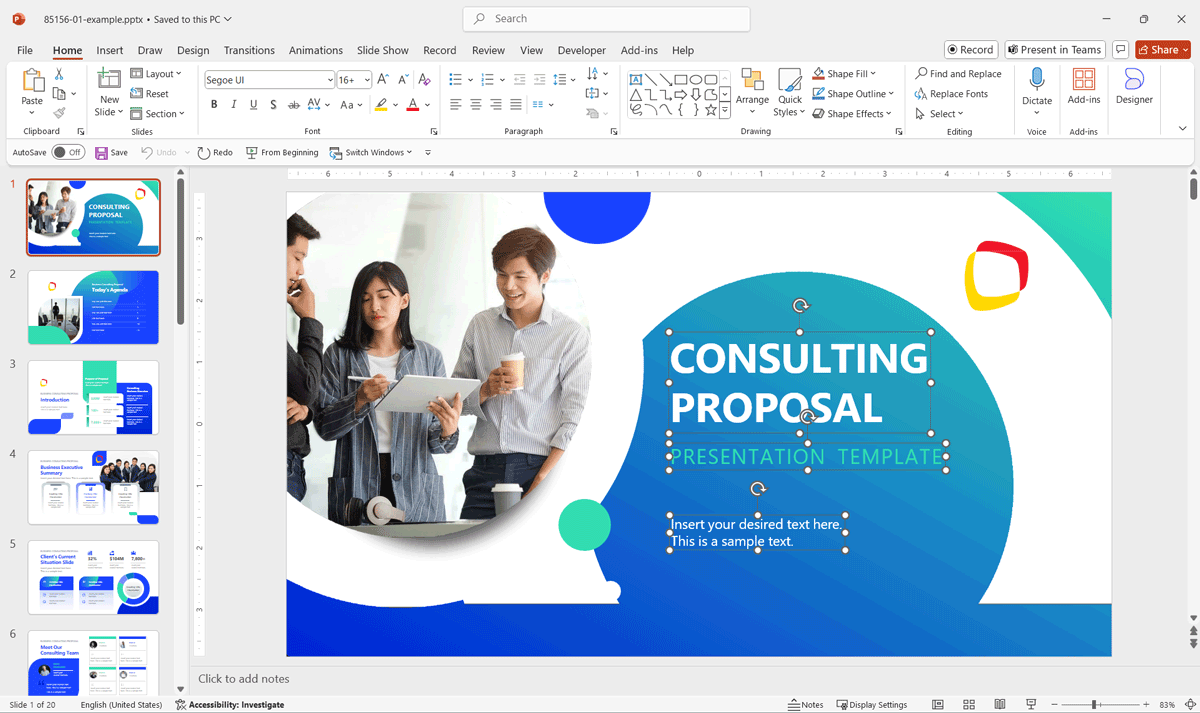
If you don’t want to rely on third-party tools, another approach could be to convert PDF to images first and then add the images to PowerPoint slides. Popular PDF tools allow you to convert PDF to Images.
There are several command line tools that you can use to PDF to JPG or PNG without quality loss, for example using gscan2pdf, convert or pdfimages.
Alternatively, Adobe Acrobat PDF includes a feature to export a PDF to images, as shown here:
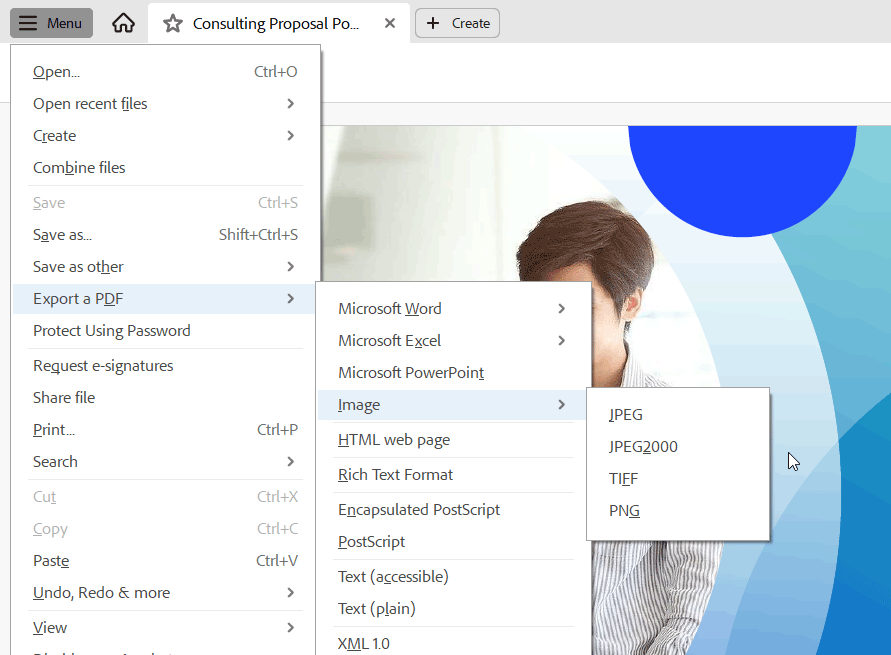
3. Use SlideModel Tools to Present PDF Like a PowerPoint
Another approach to presenting PDFs like PowerPoint is using a specific tool we are developing under the SlideModel Tools umbrella. This tool allows you to present your PDF directly in the browser, eliminating the need for third-party software. Here, you can upload your PDF file to the SlideModel platform, and it will render your presentation document in the browser, following a slide-based format. You can navigate forward and backward through the PDF pages seamlessly, using the right and left keys or clicking the mouse buttons, just like presenting slides in PowerPoint.
If you are interested in this option be the first one to be notified when it’s ready, contact us to learn more.
PDF vs. PowerPoint: Choosing the Right Format
Choosing between presenting a PDF slideshow directly or converting it to PowerPoint often depends on your presentation goals and audience expectations.
If your primary aim is to showcase polished content with minimal preparation, presenting the PDF in full-screen mode can be an acceptable option.
However, for engaging presentations requiring storytelling, animations, or audience interaction, converting the PDF to PowerPoint provides more flexibility.
Consider the context of your presentation, as formal business meetings may benefit from the professional simplicity of a PDF, while engaging a creative audience might call for the built-in features of PowerPoint. Always test your chosen method beforehand to ensure a seamless delivery.
If you choose a different format, know that you can still convert between the different options. We already saw how to convert a PDF to images using Acrobat. You can do the opposite by saving a PowerPoint presentation to PDF to turn a slide deck into a PDF document, or save a Google Slides as a PDF.
Other ways to Present PDF like a PowerPoint
Let’s say you want to run the slideshow in autopilot and advance each page of the PDF document automatically, just like you’ll do in PowerPoint slideshow.
Most popular reader have options to control this. For example, in Acrobat, you can check the Preferences and review the following options under Full Screen settings.
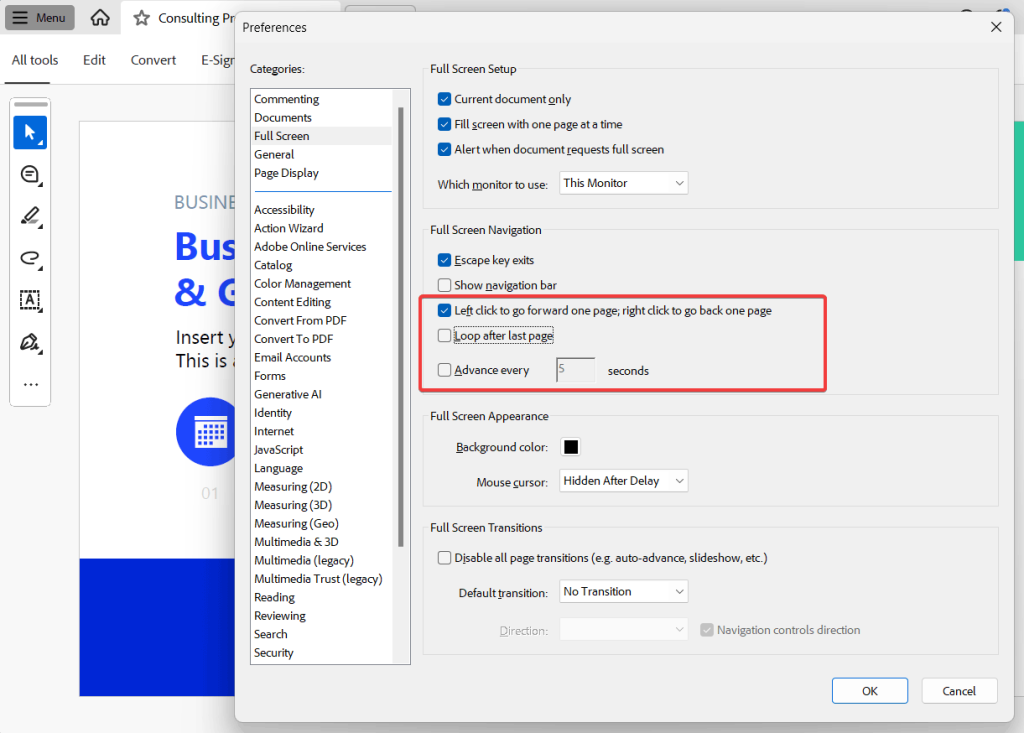
The left click to go forward one page, right click to go back one page allows you to control the slideshow using the mouse. Left click will advance the slideshow, while right click will go back.
Loop after last page will automatically loop the presentation until the last slide.
If you check the “Advance every” option, and set a value in seconds, when you run the presentation in full screen mode, it will automatically run the slideshow as in PowerPoint and advance each slide every 5 seconds, or every the value you enter.
Additionally, you can configure extra options like the Default transition to apply each time you advance the slide, or configure if you want the mouse to be hidden or visible.
Why Present a PDF Like a PowerPoint?
Here are some reasons why you may still want to use PDF as the presentation format, instead of PowerPoint.
1. Universal Compatibility
PDFs maintain their formatting across all devices and operating systems, ensuring your content looks the same on Windows, macOS, or even mobile devices. This consistency eliminates the risk of formatting errors that can occur with PowerPoint files.
2. Ease of Sharing
PDFs can be smaller in size than PowerPoint files, making them easier to share via email or file-sharing platforms. They’re also widely supported, requiring only a basic PDF reader to open.
3. Security Features
With built-in password protection, editing restrictions, and watermarking options, PDFs can be the ideal option sharing sensitive or proprietary information.
4. Preserved Design Integrity
PDFs lock in design elements like fonts, images, and layouts, ensuring your content appears exactly as intended. While PowerPoint is doing a great job over the years, and solving all the problems with formats, there are some situations in which PowerPoint may reformat the presentation on different devices.
5. Quick Preparation
If you already have a document prepared in PDF format, you can present it directly without the need to recreate slides in PowerPoint.
6. Professional Simplicity
Sometimes, a straightforward, static presentation is all you need. PDFs keep your focus on the content, free from distractions like excessive animations or transitions.
Conclusions
Presenting a PDF like a PowerPoint doesn’t have to be complicated. Whether you use full-screen mode in a PDF reader or convert the file into an editable PowerPoint, there’s a method to suit your needs. PDF slideshow presentations can be adapted to deliver professional, polished presentations with ease.
By following the tips and methods outlined in this guide, you can turn your static PDF into a compelling presentation and play them as a “PowerPoint” slideshow.
